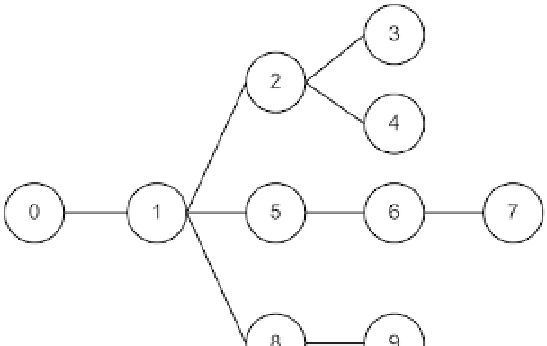Database Reference
In-Depth Information
The following is a sample execution plan generated by the
relationship.sql
script. Note that although only the
Operation
column is needed to walk through an execution plan, the
Id
column is shown here to help you identify the
operations more easily. The SQL statement used to generate it has been left out intentionally because it doesn't serve
our purposes for this section:
----------------------------------------------
| Id | Operation | Name |
----------------------------------------------
| 0 | UPDATE STATEMENT | |
| 1 | UPDATE | T |
| 2 | NESTED LOOPS | |
| 3 | TABLE ACCESS FULL | T |
| 4 | INDEX UNIQUE SCAN | T_PK |
| 5 | SORT AGGREGATE | |
| 6 | TABLE ACCESS BY INDEX ROWID| T |
| 7 | INDEX FULL SCAN | I |
| 8 | TABLE ACCESS BY INDEX ROWID | T |
| 9 | INDEX UNIQUE SCAN | T_PK |
----------------------------------------------
Figure
10-2
provides a graphical representation of the execution plan. Using the rules described earlier, you can
conclude the following:
Operation 0 is the root of the tree. It informs you about the type of SQL statement to which the
•
execution plan is associated. Operation 0 has one child: Operation 1.
Operation 1 has three children: 2, 5, and 8.
•
•
Operation 2 has two children: 3 and 4.
•
Operations 3 and 4 have no children.
•
Operation 5 has one child: 6.
•
Operation 6 has one child: 7.
•
Operation 7 has no children.
•
Operation 8 has one child: 9.
•
Operation 9 has no children.

